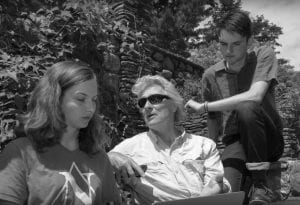Welcome
Throughout time, people have sought out Glacier National Park’s rugged peaks, clear waters, and glacial-carved valleys; its landscape giving both desired resources and inspiration to those persistent enough to venture through it. Glacier might very well be the most beautiful of America’s national parks. The mountains are steep, snowcapped, and punctuated by stunning mountain lakes and creeks. Much of the land remains wild and pristine, a result of its remote location and the lack of visitation in the 19th century.

Frederick Bianchi: Director
Glacier National Park, one of the largest of the national parks in the lower 48 states at 1600 square miles (1,013,598 acres), is located in the northern section of Montana near the Canadian border. Much of the park is backcountry and wilderness, crossed by over 700 miles of trails. Despite its remoteness, the park draws over 2.7 million visitors a year.
WPI’s collaboration with Glacier is broad and includes a wide range of research activities targeting the sciences, resource management, inventory and monitoring, visitor impact, climate change, problem-solving investigations, fact-finding studies, etc. WPI students working at Glacier experience a sense of stewardship, a greater awareness of the park’s resource issues, and an expanded insight into environmental and social research.


